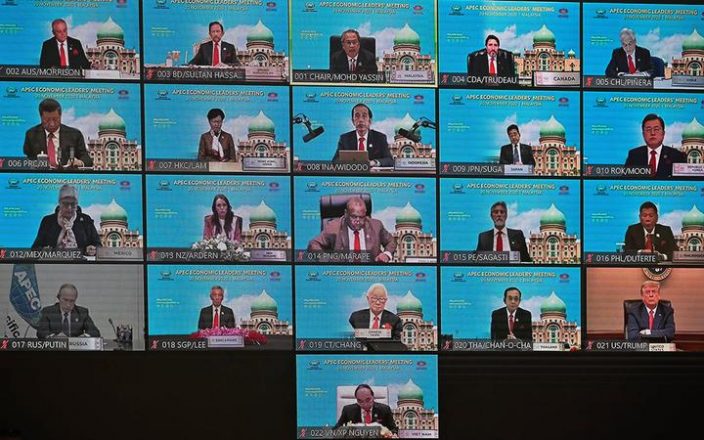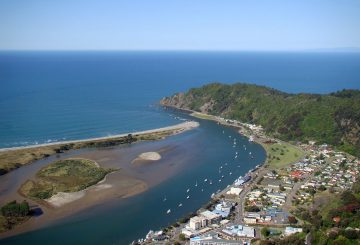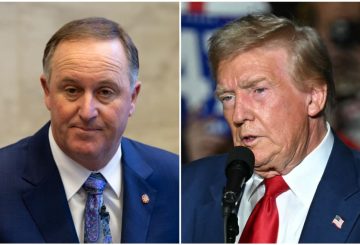Asia Pacific leaders have set aside differences with their first joint communique in three years, calling for free and predictable trade to help a global economy laid low by the coronavirus pandemic.
Leaders of the 21-nation Asia-Pacific Economic Cooperation (APEC), who included US President Donald Trump and China’s President Xi Jinping, also said they would not resort to protectionist policies.
Their joint statement, after a virtual summit hosted by Malaysia, is set against a backdrop of ongoing trade tensions between the world’s two largest economies. New Zealand will also hold next year’s APEC summit using virtual digital platforms.
“The impact of (the US-China) trade war has been eclipsed by the Covid-19 pandemic,” Malaysian Prime Minister Muhyiddin Yassin told reporters after the meeting.
“APEC has also pledged to refrain from backtracking and resorting to protectionist measures to keep markets and borders open,” he said.
In the communique, the leaders said they recognised “the importance of a free, open, fair, non-discriminatory, transparent and predictable trade and investment environment” to drive growth during the crisis.
APEC countries failed to reach agreement in 2018, after talks were stymied by discord over trade and investment between the United States and China, and last year’s gathering in Chile was cancelled due to violent street protests.
Trump, who has yet to concede and begin a transfer of government to President-elect Joe Biden, largely focused on domestic issues in his remarks at the meeting and spoke of the successes of his time in office, a source who heard it said.
The Trump administration has been criticised for a lower level of engagement in Asia. The only time he has joined an APEC summit – held annually – was in 2017.
He also missed the 10-member Association of Southeast Asian Nations (ASEAN) summit this month.
White House economic adviser Larry Kudlow told reporters that Trump’s remarks were about the coronavirus, vaccines and economic recovery. “We can do this,” he quoted Trump as saying about defeating Covid-19.
Xi, in his remarks, called for free and open trade and investment, and support for multilateralism.
He also said China will “actively consider” signing up for a regional free-trade pact, the Comprehensive and Progressive Agreement for Trans-Pacific Partnership (CPTPP).
Trump had pulled the United States out of the Trans-Pacific Partnership trade pact, the predecessor to CPTPP.
Biggest challenge
Before the meeting, several APEC leaders warned against protectionism and expressed hope that a Biden administration will engage more and support multilateral trade.
“As we confront this generation’s biggest economic challenge, we must not repeat the mistakes of history by retreating into protectionism,” New Zealand Prime Minister Jacinda Ardern said on Friday at the APEC CEO Dialogues.
“APEC must continue to commit to keeping markets open and trade flowing.”
Singapore Prime Minister Lee Hsien Loong said on Thursday that US trade policies under Trump had caused “very slow” progress in APEC in recent years, adding that he expected “more multilateralists” in the Biden administration.
Other than the CPTPP, the United States is also absent from the world’s largest free-trade bloc, the Regional Comprehensive Partnership Agreement (RCEP) – a 15-nation pact backed by China that was signed last week.
Source: RNZ News – www.rnz.co.nz





























































